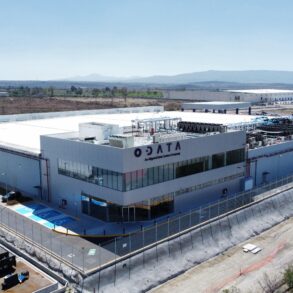Cloud Computing: everything you need to know
6 minutes readingUndoubtedly, technology is one of the leading business drivers in the digital age. So it is unsurprising that professionals in all industries want to understand it – especially Cloud Computing, whose use has been popularized since the beginning of the Covid-19 pandemic.
In this scenario, what would be the relationship between the Cloud and the productivity and growth of a given organization? What is the impact of digital technologies on corporate networks?
In practice, the increase in data generation and use, combined with the consequent increasing demand for fast and stable network connectivity, requires the architecture of Data Centers to evolve.
And that means moving from a purely local structure to a model that connects traditional systems with remote infrastructures. In this ecosystem, networks, applications and workloads are virtualized in a combination of diverse environments, such as colocation, edge and different types of Cloud.
Want to understand how all this works? Read below:
After all, what is Cloud Computing?
Cloud Computing is a general term for any function that involves hosting and delivering services over the Internet. These services are typically divided into three main categories: infrastructure as a service (IaaS), platform as a service (PaaS), and software as a service (SaaS).
In turn, cloud storage (or cloud storage) is defined as a data deposit model in which digital information, such as systems, documents, photos, videos and other forms of media, is stored on virtual servers hosted by third parties. Thus, it enables data transfer through an external storage system, allowing the customer to access them uninterruptedly whenever necessary.
“The Cloud supports the scalability and composability that advanced technologies and applications require while enabling enterprises to address emerging needs such as sovereignty, data integration and enhanced customer experience.”
Sid Nag,
Vice President Analyst at Gartner
Curiosity: the name Cloud Computing is inspired by the symbol of the Cloud, which is often used to represent the Internet in flowcharts and diagrams.
The reason is, in reality, the expression functions as a metaphor. In this type of virtual structure, data and systems are located in an ethereal, wireless place, as opposed to material hardware devices such as servers, cables, plugs or CD drives. Hence, we can compare the functionality of Cloud Computing to a cloud hovering above us.
Global scenario
According to the Worldwide Quarterly Enterprise Infrastructure Tracker: Buyer and Cloud Deployment report, published by the International Data Corporation (IDC), investments in Cloud Computing and storage infrastructure, including dedicated and shared environments, have progressively advanced year over year. In 2021, they reached US$ 73.9 billion, an increase of 8.8% compared to 2020.
Thus, it marked the second consecutive quarter of growth in this segment, even with supply chain constraints, which depleted device suppliers’ inventories in recent quarters. However, even with the delays, pent-up demand bodes well for future progression – as long as the global economy remains healthy and supply meets needs.
In this scenario, investments in shared Cloud infrastructure reached US$ 14.4 billion in the fourth quarter of 2021, an increase of 13.9% compared to the previous year. Here, IDC analysts predict continued strong demand in 2022, outpacing non-cloud infrastructure spending.
As follows, for 2022, investments in Cloud infrastructure are expected to explode in most regions, with the highest growth expected in the United States, at 27.8%. Central and Eastern Europe is the only region expected to decline in 2022, forecast to decline by 21.7% year-on-year.
Over the longer term, IDC expects Cloud computing and storage infrastructure spending to advance at a compound annual growth rate (CAGR) of 12.6% to reach $133.7 billion in 2026—68.6% of total computing and storage infrastructure spending.
How does Cloud Computing work?
In practice, cloud computing is a network of virtually connected servers whose primary function is to share information, resources and software. In this scenario, the Internet works as the invisible cable connecting physical and virtual servers worldwide.
Here, a simple way to understand how cloud computing works is to focus on the role of the Internet.
Considering that it is a global system of interconnected computer networks, which use its own set of protocols (Internet Protocol Suite or TCP/IP), the Internet offers connectivity for virtual communication between users physically located anywhere in the world. Thus, it establishes a web of connections between resources accessible from a distance.
In this scenario, cloud computing is the structure that hosts virtually all types of applications, systems and data. In this way, it allows its customers – individuals or business users – to access them via the Internet in real time, regardless of their physical location.
In turn, despite offering access to a virtual environment, the Cloud needs a physical structure to allocate physical servers, databases and remote computers that house the information of its users.
And this physical structure is the Data Center, which can be constituted either in its own facilities or in rented buildings maintained by specialized companies, as in the colocation modality.
READ HERE: Why regional Data Center network capillarity matters for your IT
Cloud types
In general, it can be said that there are three main cloud models:
- Public Cloud: a virtual environment that hosts and provides access to data and systems allocated virtually in the structure of a specialized provider (such as AWS, Google and IBM, for example), which sells services to any person or organization over the Internet. In this model, the user uses a shared structure but individually so that privacy is maintained;
- Private Cloud: is a proprietary network (or Data Center) which gives access to a limited number of people, with specific access settings and permissions, to data and systems virtually hosted in the structure of a specialized provider;
- Hybrid Cloud: In this model, applications run in a combination of different environments, connecting at least one public and one private Cloud. Thus, it provides orchestration, management and portability of systems and data between them, creating a single, flexible and ideal environment to run an enterprise’s computing workloads.
Either way, be it private, public or hybrid, the vital function of the Cloud is to provide easy and scalable access to computing resources and IT services. Therefore, cloud computing can also be considered utility or on-demand computing.
READ MORE: Why Colocation is critical to the future of hybrid cloud
Cloud vs Edge: what’s the difference?
Even with predictions of the continued progression of Cloud, experts are also betting on its growing popularity and benefits (or edge computing, as it is called here).
According to Gartner’s glossary, edge computing is part of a distributed computing topology, where information processing is located close to the edge or in the vicinity where things and people produce or consume that information.
So, would there be advantages to edge computing compared to the Cloud? This is a question that most IT professionals are currently asking.
First, it is essential to understand that Cloud Computing and edge computing are different and non-interchangeable technologies that cannot replace each other. Edge computing is used to process time-sensitive data, while Cloud is used to process data that is not time-sensitive.
In general, edge computing is helpful when organizations must mitigate the latency caused by passing information across the network between a device and a central computing system—for example, a machine whose functionality is essential for a particular company. A delay in the operation of this equipment due to latency, would result in losses for the organization.
In these cases, IT managers use the edge because smart devices with high computational power are installed at the network’s edge. Servers are often also allocated in colocation buildings which, as their main attribute, are neutral regarding connectivity, ensuring internet delivery even when the preferred operator’s service fails. And so, the minimization of network latency is amplified.
In addition to latency, edge computing is preferred over Cloud Computing in remote locations with limited or no connectivity. These environments require local storage, similar to a mini Data Center – a situation where colocation services are the most indicated.
Edge is also beneficial for specialized and smart devices. Although similar to PCs, they are not ordinary computing devices designed to perform various functions. These devices respond to certain machines in a specific way.
Need help building a hybrid infrastructure and reaping its benefits?
Exclusive E-BOOKS
to help you learn more about the world of colocation.

Related Posts
SUBSCRIBE TO OUR NEWSLETTER






